Existing User Log In
New User Registration
Register for a free account to gain full access to the VGChartz Network and join our thriving community.



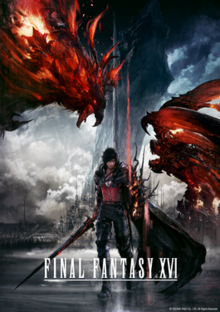

America - Front
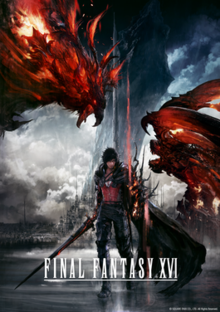

America - Back

Final Fantasy is one unique series. Despite the franchise being on its 16th main installment, aptly named Final Fantasy XVI (with probably over a hundred spin-offs and side games), it rarely ever continues where it left off. Most entries feature widely different stories, settings, characters, and even leveling systems. Even the basic combat has changed significantly over the years. Originally starting with a turn-based battle system, the series began to experiment with Final Fantasy IV. Since then, the games have incorporated the Active Time Battle system, Conditional Turn Based Battle system, Real Time Battle system, Active Dimension Battle system, Command Synergy Battle system, and Active X Battle system. Needless to say, Final Fantasy rarely sticks with one battle system across mainline entries.
Because of this, Square Enix is in the unique position of being able to capitalize on the franchise’s name while providing combat that feels wholly idiosyncratic. Unfortunately, this becomes a double-edged sword. While Square Enix has developed some incredibly beloved combat and leveling systems (e.g. Final Fantasy XII’s gambit system), the reception towards franchise changes has been anything but unanimous. This is partially why you’ll get vastly different answers when asking a Final Fantasy fan which game in the series they think is the best. In addition, there are a large number of classic fans who want nothing more than for Final Fantasy to go back to the turn-based style the series was known for 20 years ago.
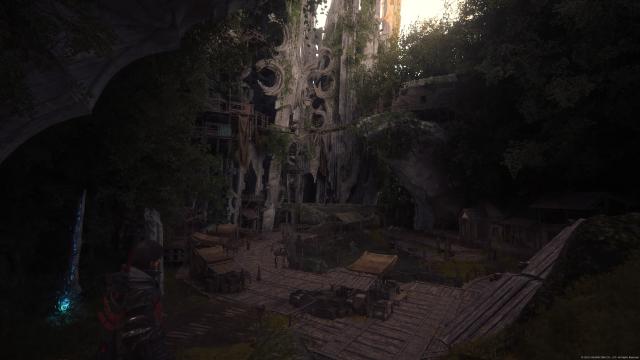
There's good news and bad news to all of this. First, Square Enix has, once again, changed the core battle system from Final Fantasy XV, mostly for the better. But, of course, this means that Square Enix has moved even farther from the more basic turn-based JRPG style of combat that many fans have been clamoring for. In this sense, it honestly doesn’t feel much like a Final Fantasy game at all. Don’t leave, though. I’m here to explain why that might not be such a bad thing.
Let’s begin with the setting. While the aforementioned combat system may be vastly different from the archetypal Final Fantasy style, the world in which it is set is far more typical. XVI returns to the high fantasy era, with swords, shields, metallic armor, knights, kings, queens, and gigantic crystals that are at the epicenter of the world's economy. That’s right, elemental crystals are back. Though, instead of being symbolic of peace and prosperity, they're instead at the heart of war, famine, and climate change. In fact, the theme suggests that the “mother crystals”, the source of all of the world's crystals, appear to be allegory for our own real world economic sources, such as fossil fuels.
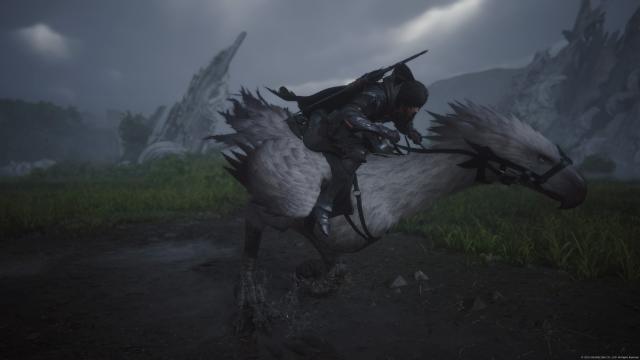
Across the land of Valisthia people use crystals to make their lives easier, despite it having a direct impact on the planet, influencing a blight that has begun to spread. Where the blight has taken effect, nothing can grow. It’s a desolate environment where nary even a bug would survive. Yet the majority of people across the world don’t seem to take notice, opting to continue their use of crystals to luminate the outside, make fires, and even prune plants.
While most individuals are only able to conduct magic with a crystal, there are special individuals who are able to cast magic without one. However, too much use of their magic and they will become afflicted with an illness which slowly turns them into stone. These individuals are called Bearers, or Branded, and they're often given a unique tattoo, or brand, which is typically set on their left cheek. Across much of Valisthia, Branded are used as slaves. They're forced to use their magic to make the lives of others easier and are treated as disposable tools of little actual worth. This is thematic throughout the entire game too.
While the main quest mentions the hardships of the Branded quite often, it's the side quests that truly show the horrors these people are exposed to. One side quest has a father and son work together to trick multiple Branded into getting eaten by wolves for sport. Another has a little girl asking you to find what is assumed to be a pet. Once found dead, however, the little girl acts like the only inconvenience of her Branded’s death is that she'll never find another with “hair as pretty as hers”. It’s a good thing that these side quests are memorable storywise, though, as the side quest activities are very typical hunting or fetching quests that don’t vary too much throughout the game.

While Final Fantasy has dabbled in dark themes before, never have I experienced such a brazen portrayal of macabre before in the franchise. Often characters in the series will die, but during heroic feats, like saving the day of their friends. Though this does happen in FF16 as well, there's a lot of pointless death here too, particularly those who are Branded. In fact, one character, Cid, explains this theme very well, suggesting that the world will get significantly worse before it will ever get any better.
In addition to Branded, there are also Dominants. These are individuals who are able to control Eikons, similar to summons from past Final Fantasy titles. Like summons, Eikons are huge and powerful beings, capable of wiping out entire armies easily. Unlike Branded, Dominants are treated differently depending upon the country they serve. Some are given huge amounts of wealth, and are set to be Kings and Lords of the land. Others are captured and used as war machines, much like the Branded are.
While there's a large cast of characters, you'll almost always be in control of Clive Rosfield. Though Clive Rosfield was not born a Bearer, he was given the “blessing of the Phoenix”, and is able to wield fire magic because of it. His brother, however, is the Dominant of the Phoenix, and is the true heir to the throne. The relationship between Clive and his brother, Joshua, is depicted as a very nurturing one. Clive takes care of his brother and wants nothing more than to be his guardian. His brother, however, appears to wish that he was not a Dominant and heir to the throne, and that it should, instead, be Clive who is the leader.
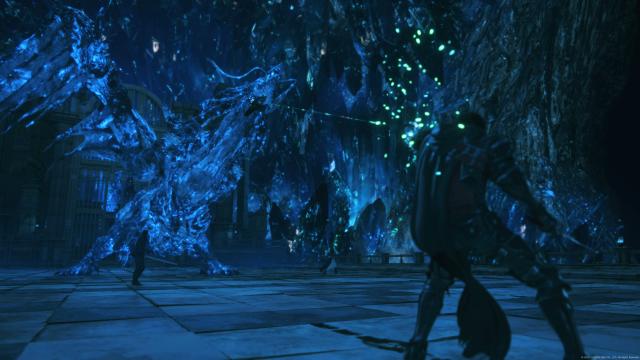
Like all stories, the peace that Clive and his brother experience is fleeting, and Clive is thrust towards his destiny. He quickly finds himself branded and a slave to a different empire, forced to find Eikons and dispose of them. Clive doesn’t follow orders well, however, and ultimately absconds from the empire. If caught, he would be given the death sentence, so he remains in hiding with Cid, a man who wants nothing more than to give Bearers a better life through any means necessary. Clive and Cid thus start their journey of restoring justice to those who have none and restoring the planet to its rightful glory.
The story isn’t quite as simple as I’m explaining it. There are a large number of rival nations, warring cultures, connecting relationships, and political discourse, almost emulating Game of Thrones at points. Now, I won’t say that the story is incomprehensible by any means. It’s still rather easy to follow. However, if you were to ever get lost, or if you simply want to discover more of the lore within FF16, look no further than the Active Time Lore and State of the Realm systems. At any point during the story, you're able to quickly pause and get a debrief on the major events, locations, and characters that are occurring in a particular sequence. Further still, you can use the State of the Realm system to find out the entire history of a character and their relationships throughout the game world. Though the State of the Realm system does appear to be influenced by Xenoblade’s affinity system, the Active Time Lore system is wholly unique. Both of these combined help flesh out the world to seem even more alive and sprawling than one might initially anticipate.
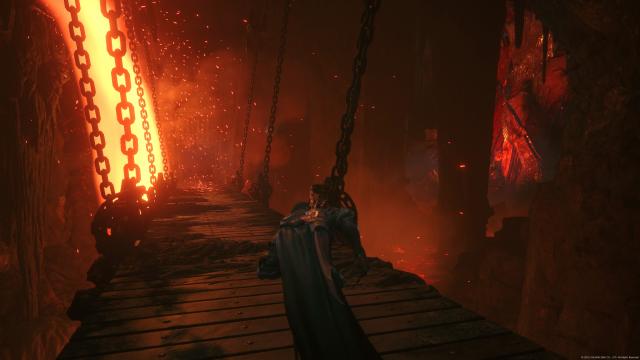
Graphically the game verges on good looking, but the limited scope of the world does leave me scratching my head. Final Fantasy XVI appears to use a mix of real time action sequences atop in-engine renders to create very over-the-top set pieces. You’ll see hundreds of men being hurled by great big giants as the earth crumbles below them within just the first few minutes, and it all feels quite astounding. This is accompanied by dramatically arranged music from the Final Fantasy universe. Even simple songs, like the title theme for Final Fantasy, are given a complete overhaul, and are adjusted to match the altered moods of this particular title. It’s well conducted, and something that many are sure to appreciate.
During story cutscenes, the lip syncing is quite high quality. Characters move their faces naturally, talking in a rather realistic fashion. Models are made with high geometric detail and textures are high resolution. There's a form of temporal upscaling present here, but the usual artifacts that are present are hidden quite well by the use of motion blur. It can be difficult to identify the original rendering resolution of the game because of this, but it’s safe to say that while it may not be a native 4K picture, it looks almost as good due to smart decisions made by the developers. Though it launched without the ability to toggle motion blur, recent updates have allowed for the possibility to remove it altogether. However, in my opinion, it looks much better with motion blur because of how well it blends action sequences together while hiding temporal upscaling artifacting.
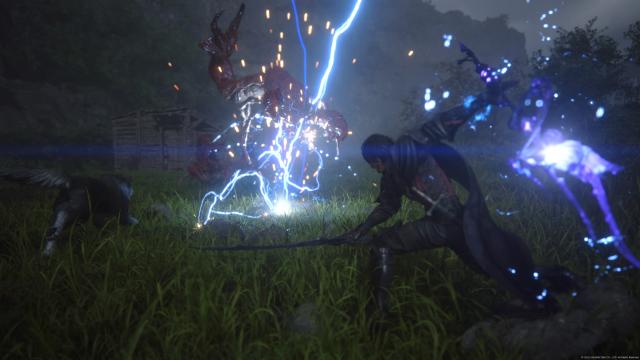
While exploring you’ll find yourself lost in highly detailed environments with beautiful and artistic landscapes. Foliage appears to be highly detailed three-dimensional meshes, allowing for more realistic models which bend slightly to the player's movement. Tiles in certain areas are lifted and cracked, providing a less uniform (and thus more lifelike) look. Material quality overall is truly top notch. You can practically reach out and touch the scuffed metals and worn leathers found in the game, with the impression that they would feel suitably grainy or scratched. Lastly, particle effects are used in great ways here, filling the scene with particles of smoldering fire or other elemental effects, allowing for a more artistic feel.
While Final Fantasy XVI looks impressive during story cutscenes, dialogue sequences outside of the story have a certain stiffness that appears jarring in comparison. The lip syncing and realistic facial muscular movements found in cutscenes are completely absent for non-story beats, leading to very lifeless encounters with the townsfolk. In fact, the effect is so surprising that it’s hard to believe that this game doesn’t have Japanese language lip syncing, because I would have believed the facial movements were coming from another language. Other character details, such as hair, are stiff and feel unnatural in comparison to the other materials that are found in the game.
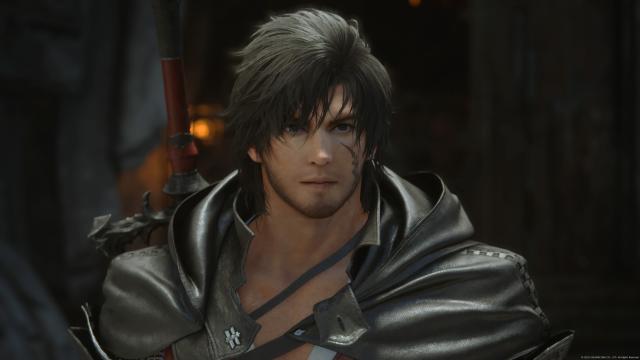
In addition, while it does look high quality, I have a distinct feeling of disappointment when thinking about the graphical leap between Final Fantasy XV and XVI. XV was an open world title that looked great last generation. While this title does look better overall, it doesn’t quite look like the graphical leap I was expecting being a current-gen only release. Areas are broken up into sections, some interconnecting and some not. While there's a lot of geometric detail, there are also a lot of distant LOD changes and asset popping as you move through the world. In addition, the use of advanced effects such as ray tracing aren’t present (though there is a pretty good shadow solution implemented here for dynamic shadows). Water reflections use very standard SSR, and lighting appears to be baked for static geometry. While everything works cohesively together, it feels like the developers of XVI were still targeting last generation hardware during much of the game's development. Or, at least, that the engine it's using doesn’t support more advanced feature sets.
There are two modes: graphics mode and performance mode. Graphics mode locks the game to 30FPS, but increases the resolution. Performance mode reduces the resolution, and potentially reduces object draw in distances, while raising the performance cap to 60FPS. Unfortunately, the performance mode feels too choppy on a normal display, with framerates being wildly inconsistent between 40 and 50 FPS most of the time. When you enter a battle the framerate increases to a rather solid 60FPS, but this actually makes the mode feel worse. When your eyes begin to expect the inconsistency of the gameplay, a combat sequence will force your eyes to adjust to a smooth 60FPS playing experience, so going back to the inconsistent frame times and jitteriness during regular exploration feels like moving your character up stream through a river. It’s just not a good experience.
Lastly, there are very few graphical glitches here. I did note some noticeable VRS artifacts, where depending on the direction your character is facing you can see some subtle changes in the shading of objects on screen. This may not be noticeable to everyone, however, and it’s easy to miss if you don’t know what to look for.
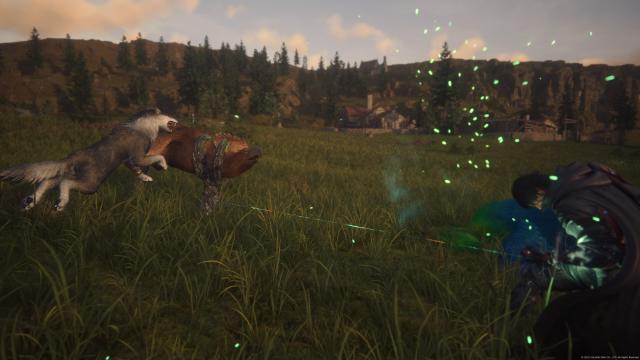
Now the combat is where XVI truly shines. It's an action-RPG, with an emphasis on action. This is, by far, the fastest and most fluid combat that Final Fantasy has ever had. There's no turn-based or active turn-based sequence. The combat appears almost overly simplistic initially. Square is a sword attack, triangle is a magic attack, R1 to dodge attacks, and circle to dash (initially). Yet, the more you unlock the more flexibility and fluidity the combat has. There are some small combinations of movesets and you can use powerful abilities strategically to break through enemy guards or as crowd control. There's some air combat here as well; if you hit an enemy upwards Clive will naturally follow them for some light juggling, though I wouldn’t expect anything quite in the realm of, say, Kingdom Hearts, with regard to air combat.
You also have partners with you during combat. You’ll almost always have a trusty wolf at your side, which you can control with the D-Pad. Although controlling your wolf with the D-Pad is flexible at times, I found myself constantly forgetting to switch between items and my wolf (both controlled by the D-Pad), so instead of having my wolf attack I would heal with a potion (or vice versa). As combat became more frantic, I began relying on cooperating with my wolf a lot less. You’ll also travel the world with other fierce Dominants who are ready to use their powers against foes. You, the player, have no direct control over what these characters do though.
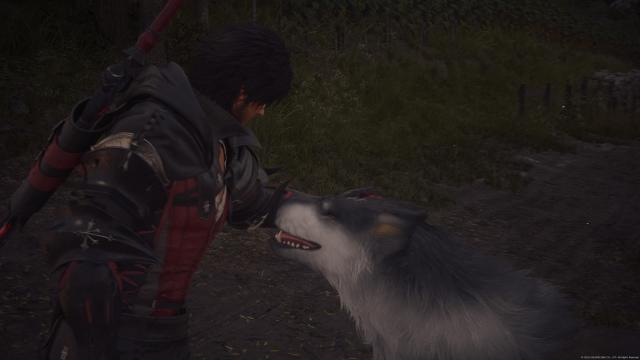
Enemy variety is quite fantastic. There are hundreds of different types of enemies depending on your location, and they generally have different patterns of behavior. What really shines are the boss fights. These are gigantic spectacles with beasts hundreds of times bigger than you. One fight has you thrust into the air of a tornado, fighting a hundred foot tall beast atop unstable pieces of a cliffside lifted by the wind. Moments later, a large scale battle of the titans (think godzilla) occurs in a forested area, which becomes a barren wasteland of ash and fire as the fight rages on. These types of large spectacle fights are often missing in games of the modern era, and it’s a great thing to see here.
As you progress through Final Fantasy XVI you unlock more powers and abilities. One thing I began to notice as I progressed is that the combat and action sequences appear to be almost PS3-era God of War like. There are QTE action sequences during key boss fight moments. You’ll unlock other weapon abilities with different elemental properties. You’ll fight gigantic Eikons (even occasionally fighting ON the Eikon). There's even a “spartan rage” type mode by pressing L3 and R3 together, where you become emblazoned in fire and deal extra damage. Now, the combat is much more fluid and dynamic than the God of War games overall, but I found it funny how the God of War franchise has been emphasizing a more RPG-esque approach recently while Final Fantasy is becoming more action focused.
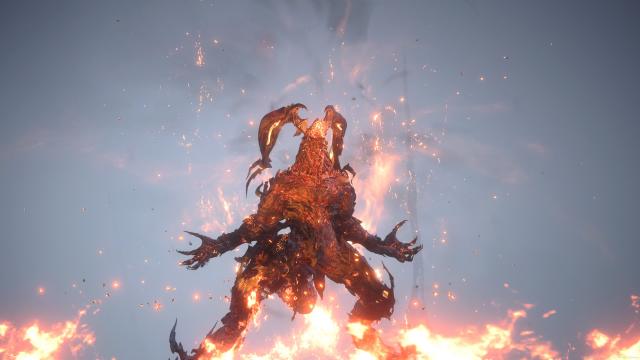
It's action focused but that doesn't mean that there are no RPG elements. Experience points level you up, increasing your base stats (of course), while ability points allow you to improve the damage of your Eikon abilities or unlock new abilities. You’ll receive these points after every battle, with more or less depending on the enemies. It’s really not devoid of RPG mechanics, it just no longer feels at the heart of the gameplay. Instead, it feels like Square Enix opted to make sure that the combat itself was as fun as possible before accounting for RPG mechanics, and here they succeeded. And the combat is, by far, some of the best in the genre. It’s fast, fluid, dynamic, and simple, allowing for dodging, parrying, dashing, pulling enemies towards you, and toppling them to be very easy to accomplish. If combat isn’t your thing and you prefer to focus on the story, Square also created items that are equippable very early which use these combat techniques automatically. This isn’t the way I would opt to play it, but for those who struggle with combat, it’s nice to see that you can still experience Final Fantasy XVI in all its glory and style.
Final Fantasy XVI is the first current-gen Final Fantasy. Though it doesn’t feel like a true next generational leap over XV in all ways, it still makes small leaps in a positive direction. The story is dark, brooding, and interesting, the characters are well developed and likeable, and the combat is some of the best in the series despite a lack of emphasis on RPG mechanics. Yes, I like RPGs as much as the next person, but a good game is a good game, and Final Fantasy XVI is more than that; it’s a great one, with some minor hiccups and inconsistencies that prevent it from reaching top tier.










|
|
|
|
|
Machina
posted 28/06/2023, 06:17
3 million in the first 5 days. https://www.vgchartz.com/article/457668/final-fantasy-xvi-ships-3-million-units/ Message | Report |